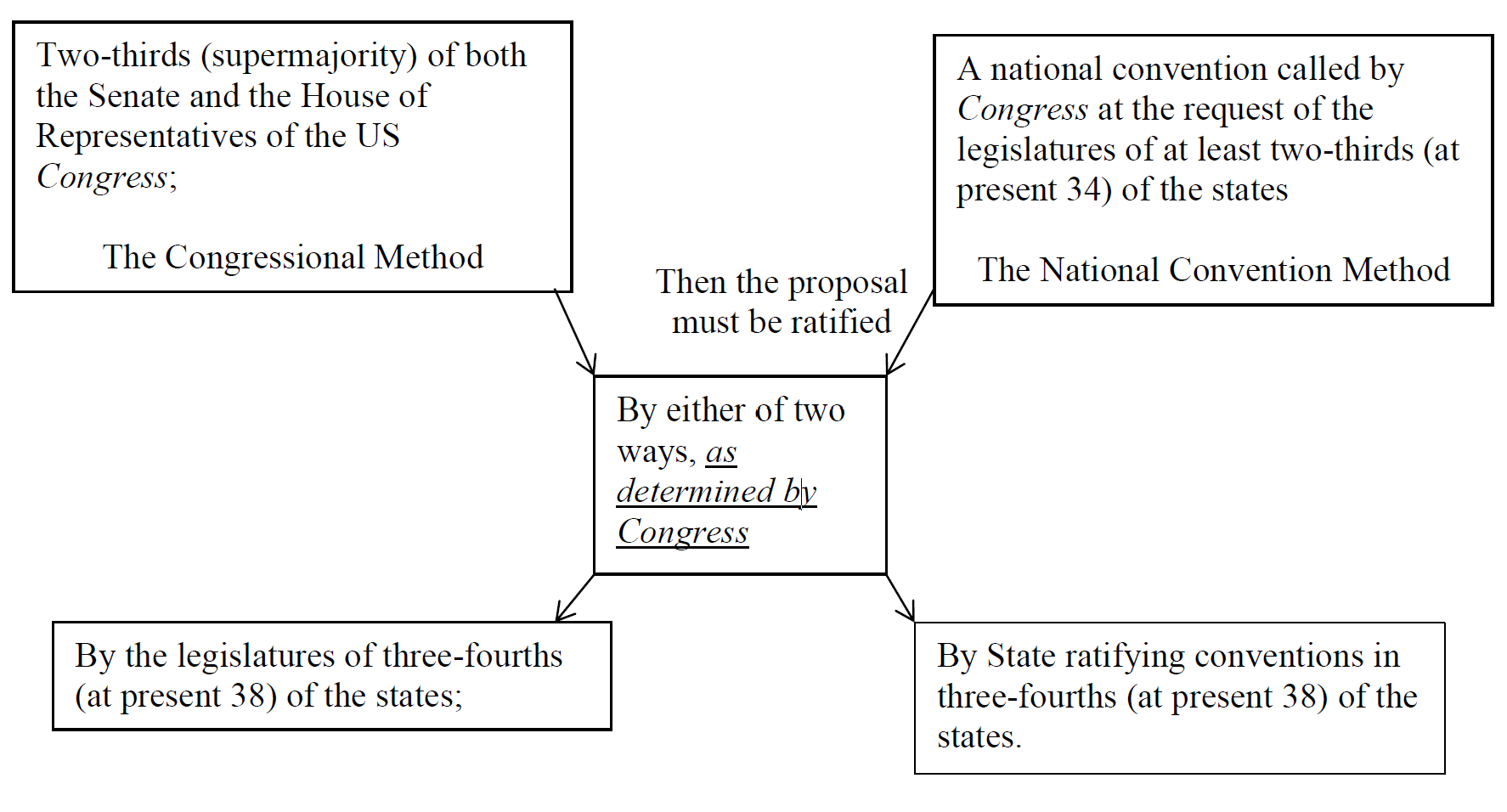The United States federal government for a long time has been veering more and more away from the republican form of government as spelled out in the Constitution on account of court decisions that distort the language of the Constitution and by incremental abuses that take advantage of those distortions. While many may want to amend the Constitution in order to address these issues using Article V of the Constitution, there are obstacles standing in the way. Those obstacles are discussed below, and a series of measures are proposed to deal with those obstacles so that the US Constitution can be amended, and needed reforms can be introduced.
First consider the US Constitution’s Article V, which states with how the Constitution may be amended:
The Congress, whenever two thirds of both Houses shall deem it necessary, shall propose Amendments to this Constitution, or, on the Application of the Legislatures of two thirds of the several States, shall call a Convention for proposing Amendments, which, in either Case, shall be valid to all Intents and Purposes, as Part of this Constitution, when ratified by the Legislatures of three fourths of the several States, or by Conventions in three fourths thereof, as the one or the other Mode of Ratification may be proposed by the Congress; Provided that no Amendment which may be made prior to the Year One thousand eight hundred and eight shall in any Manner affect the first and fourth Clauses in the Ninth Section of the first Article; and that no State, without its Consent, shall be deprived of its equal Suffrage in the Senate.
The following graphic is offered as a simplified way of presenting the essential aspects of Article V:
A Constitutional amendment is proposed by:

So far, ALL of the amendments to the US Constitution have been initiated by Congress, using the Congressional Method. The histories of the passage of those amendments provide collectively a reasonably rich exposition of the Congressional Method. However, unlike most of those amendments, we are concerned here with reform amendments, the purposes of which are to reform and/or constrain the way our government works and/or restrain excessive power and influence that have unlawfully evolved in various parts of the government at the expense of the republican form of government authorized by the US Constitution, and of the sovereignty of the US citizens. (The most significant reform amendment obtained by the Congressional method in the last 100 years was Amendment XXII, adopted in 1951, which limits an individual to two terms as President; all other amendments in the last century were essentially instances of adding law to the Constitution. There is little doubt that Amendment XXII is needed; however, already the spirit, though not the letter, of it has been flouted by Hillary Clinton’s two runs for the Presidency following Bill Clinton’s two terms as President, and by the Bush brothers both following their father’s Presidency.)
So far, despite the fact that 4 out of 5 citizens of the Republic want Congressional Term Limits, they have been completely unable to get a two-thirds supermajority of both the Senate and the House of Representatives of the US Congress to propose for ratification a Congressional Term Limits Amendment of any form. In short, the ruling class is hardly going to permit the proposal, especially by a supermajority of Congress, of any reform amendment which would curtail its own power, which it covets above all else.
The principal concern here is reforming our government and steering it to be less corrupt and more attuned to a constitutional republican form of government. As the Congressional Method is essentially irrelevant for this purpose, the focus of attention here will be exclusively on the National Convention Method of amending the Constitution and particularly on the following issues:
- The reasons the National Convention Method is important,
- The reasons it has never been used to actually amend the Constitution,
- What can be done concerning the problems with the National Convention Method,
- A proposed way for getting the Amendment for Reform added to the US Constitution, and
- Conclusions

